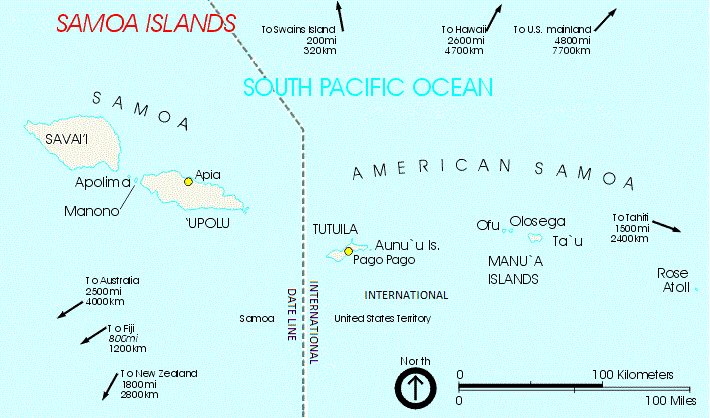|
Takuu Language
Takuu (also Mortlock, Taku, Tau, or Tauu) is a Polynesian language from the Ellicean group spoken on the atoll of Takuu, near Bougainville Island. It is very closely related to Nukumanu and Nukuria from Papua New Guinea and to Ontong Java and Sikaiana from Solomon Islands. Population The Takuu language is spoken in Mortlock village on the Takuu atoll (Marqueen Islands) off the east coast of Bougainville in Papua New Guinea. Takuu lies about 250 km to the northeast of Kieta, capital of Bougainville. The atoll consists of about 13 islands, but most of the population lives on a small neighboring island named Nukutoa. The islands are inhabited by approximately, 400 people of Polynesian origin. The people who speak the Takuu language are known “the people of Takuu” or just Takuu. According to Ethnologue, there are about 1,750 speakers of the Takuu language. Phonology Consonants Takuu has eleven consonants: f, k, l, m, n, p, r, s, t, v, and h. Moyle states that the ... [...More Info...] [...Related Items...] OR: [Wikipedia] [Google] [Baidu] |
Mortlockese Language
Mortlockese (Kapsen Mwoshulók), also known as Mortlock or Nomoi, is a language that belongs to the Chuukic languages, Chuukic group of Micronesian languages in the Federated States of Micronesia spoken primarily in the Mortlock Islands (Nomoi Islands, Nomoi or Lower Mortlock Islands and the Upper Mortlock Islands).Odango, Emerson. 2015Afféú Fangani ‘Join Together’: A Morphophonemic Analysis Of Possessive Suffix Paradigms And A Discourse-Based Ethnography Of The Elicitation Session In Pakin Lukunosh Mortlockese University of Hawai'i at Mānoa Ph.D. dissertation. It is nearly intelligible with Satawalese language, Satawalese, with an 18 percent intelligibility and an 82 percent lexical similarity, and Puluwatese language, Puluwatese, with a 75 percent intelligibility and an 83 percent lexical similarity. The language today has become mutually intelligible with Chuukese language, Chuukese, though marked with a distinct Mortlockese accent. Linguistic patterns show that Mortlocke ... [...More Info...] [...Related Items...] OR: [Wikipedia] [Google] [Baidu] |
Glottal Consonant
Glottal consonants are consonants using the glottis as their primary articulation. Many phoneticians consider them, or at least the glottal fricative, to be transitional states of the glottis without a point of articulation as other consonants have, while some do not consider them to be consonants at all. However, glottal consonants behave as typical consonants in many languages. For example, in Literary Arabic, most words are formed from a root ''C-C-C'' consisting of three consonants, which are inserted into templates such as or . The glottal consonants and can occupy any of the three root consonant slots, just like "normal" consonants such as or . The glottal consonants in the International Phonetic Alphabet are as follows: Characteristics In many languages, the "fricatives" are not true fricatives. This is a historical usage of the word. They instead represent transitional states of the glottis (phonation) without a specific place of articulation, and may behave as ... [...More Info...] [...Related Items...] OR: [Wikipedia] [Google] [Baidu] |
Hawaiian Language
Hawaiian (', ) is a critically endangered Polynesian language of the Austronesian language family, originating in and native to the Hawaiian Islands. It is the native language of the Hawaiian people. Hawaiian, along with English, is an official language of the U.S. state of Hawaii. King Kamehameha III established the first Hawaiian-language constitution in 1839 and 1840. In 1896, the Republic of Hawaii passed Act 57, an English-only law which subsequently banned Hawaiian language as the medium of instruction in publicly funded schools and promoted strict physical punishment for children caught speaking the Hawaiian language in schools. The Hawaiian language was not again allowed to be used as a medium of instruction in Hawaii's public schools until 1987, a span of 91 years. The number of native speakers of Hawaiian gradually decreased during the period from the 1830s to the 1950s. English essentially displaced Hawaiian on six of seven inhabited islands. In 2001, native ... [...More Info...] [...Related Items...] OR: [Wikipedia] [Google] [Baidu] |
Māori Language
Māori (; endonym: 'the Māori language', commonly shortened to ) is an Eastern Polynesian languages, Eastern Polynesian language and the language of the Māori people, the indigenous population of mainland New Zealand. The southernmost member of the Austronesian language family, it is related to Cook Islands Māori, Tuamotuan language, Tuamotuan, and Tahitian language, Tahitian. The Māori Language Act 1987 gave the language recognition as one of New Zealand's official languages. There are regional dialects of the Māori language. Prior to contact with Europeans, Māori lacked a written language or script. Written Māori now uses the Latin script, which was adopted and the spelling standardised by Northern Māori in collaboration with English Protestant clergy in the 19th century. In the second half of the 19th century, European children in rural areas spoke Māori with Māori children. It was common for prominent parents of these children, such as government officials, to us ... [...More Info...] [...Related Items...] OR: [Wikipedia] [Google] [Baidu] |
Tokelauan Language
Tokelauan () is a Polynesian language spoken in Tokelau and historically by the small population of Swains Island (or Olohega) in American Samoa. It is closely related to Tuvaluan and is related to Samoan and other Polynesian languages. Tokelauan has a co-official status with English in Tokelau. There are approximately 4,260 speakers of Tokelauan, of whom 2,100 live in New Zealand, 1,400 in Tokelau, and 17 in Swains Island. "Tokelau" means "north-northeast". Loimata Iupati, Tokelau's resident Director of Education, has stated that he is in the process of translating the Bible from English into Tokelauan. While many Tokelau residents are multilingual, Tokelauan was the language of day-to-day affairs in Tokelau until at least the 1990s, and is spoken by 88% of Tokelauan residents. Of the 4600 people who speak the language, 1600 of them live in the three atolls of Tokelau – Atafu, Nukunonu and Fakaofo. Approximately 3000 people in New Zealand speak Tokelauan, and the rest of t ... [...More Info...] [...Related Items...] OR: [Wikipedia] [Google] [Baidu] |
Samoan Language
Samoan ( or , ) is a Polynesian languages, Polynesian language spoken by Samoans of the Samoan Islands. Administratively, the islands are split between the sovereign country of Samoa and the Unincorporated territories of the United States, United States territory of American Samoa. It is an official language, alongside English language, English, in both jurisdictions. It is widely spoken across the Pacific region, heavily so in New Zealand and in Australia and the United States. Among the Polynesian languages, Samoan is the most widely spoken by number of native speakers. Samoan is spoken by approximately 260,000 people in the archipelago and with many Samoans living in diaspora in a number of countries, the total number of speakers worldwide was estimated at 510,000 in 2015. It is the third-most widely spoken language in New Zealand, where 2.2% of the population, 101,900 people, were able to speak it as of 2018. The language is notable for the phonology, phonological differenc ... [...More Info...] [...Related Items...] OR: [Wikipedia] [Google] [Baidu] |
Counting System
In linguistics, a numeral in the broadest sense is a word or phrase that describes a numerical quantity. Some theories of grammar use the word "numeral" to refer to cardinal numbers that act as a determiner that specify the quantity of a noun, for example the "two" in "two hats". Some theories of grammar do not include determiners as a part of speech and consider "two" in this example to be an adjective. Some theories consider "numeral" to be a synonym for "number" and assign all numbers (including Ordinal numeral, ordinal numbers like "first") to a part of speech called "numerals". Numerals in the broad sense can also be analyzed as a noun ("three is a small number"), as a pronoun ("the two went to town"), or for a small number of words as an adverb ("I rode the slide twice"). Numerals can express relationships like quantity (cardinal numbers), sequence (ordinal numbers), frequency (once, twice), and part (fraction). Identifying numerals Numerals may be attributive, as in ''tw ... [...More Info...] [...Related Items...] OR: [Wikipedia] [Google] [Baidu] |
Syllable
A syllable is a basic unit of organization within a sequence of speech sounds, such as within a word, typically defined by linguists as a ''nucleus'' (most often a vowel) with optional sounds before or after that nucleus (''margins'', which are most often consonants). In phonology and studies of languages, syllables are often considered the "building blocks" of words. They can influence the rhythm of a language, its prosody, its poetic metre; properties such as stress, tone and reduplication operate on syllables and their parts. Speech can usually be divided up into a whole number of syllables: for example, the word ''ignite'' is made of two syllables: ''ig'' and ''nite''. Most languages of the world use relatively simple syllable structures that often alternate between vowels and consonants. Despite being present in virtually all human languages, syllables still have no precise definition that is valid for all known languages. A common criterion for finding syllable bound ... [...More Info...] [...Related Items...] OR: [Wikipedia] [Google] [Baidu] |
Reduplication
In linguistics, reduplication is a Morphology (linguistics), morphological process in which the Root (linguistics), root or Stem (linguistics), stem of a word, part of that, or the whole word is repeated exactly or with a slight change. The classic observation on the semantics of reduplication is Edward Sapir, Edward Sapir's: "Generally employed, with self-evident symbolism, to indicate such concepts as distribution, plurality, repetition, customary activity, increase of size, added intensity, continuance." It is used in inflections to convey a grammatical function, such as plurality or intensification, and in Lexicon, lexical Derivation (linguistics), derivation to create new words. It is often used when a speaker adopts a tone more expressive or figurative than ordinary speech and is also often, but not exclusively, Iconicity, iconic in meaning. It is found in a wide range of languages and language groups, though its level of Productivity (linguistics), linguistic productivit ... [...More Info...] [...Related Items...] OR: [Wikipedia] [Google] [Baidu] |
Liquid Consonant
In linguistics, a liquid consonant or simply liquid is any of a class of consonants that consists of rhotics and voiced lateral approximants, which are also sometimes described as "R-like sounds" and "L-like sounds". The word ''liquid'' seems to be a calque of the Ancient Greek word (; ), initially used by grammarian Dionysius Thrax to describe Greek sonorants. Liquid consonants are more prone to be part of consonant clusters and of the syllable nucleus. Their third formants are generally non-predictable based on the first two formants. Another important feature is their complex articulation, which makes them a hard consonant class to study with precision and the last consonants to be produced by children during their phonological development. They are also more likely to undergo certain types of phonological changes such as assimilation, dissimilation and metathesis. Most languages have at least one liquid in their phonemic inventory. English has two, and . His ... [...More Info...] [...Related Items...] OR: [Wikipedia] [Google] [Baidu] |



